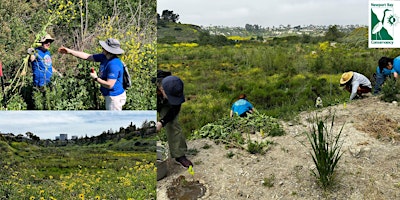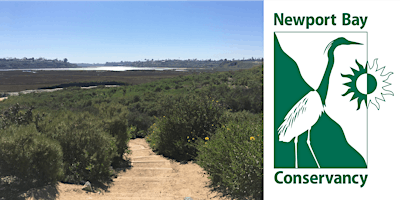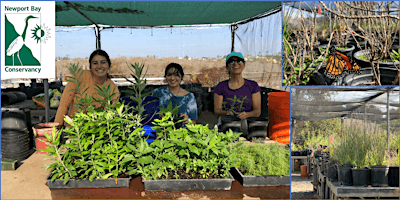 Adapted from an Article by Naturalist Russ Kerr that appeared in the September 2006 edition of Tracks
Adapted from an Article by Naturalist Russ Kerr that appeared in the September 2006 edition of Tracks
Excitement is in the air at the Upper Newport Bay Ecological Reserve. Thirteen years after building an osprey nesting platform, a pair of ospreys have stayed over from their winter migration and successfully bred and fledged two beautiful juveniles. I had been resigned to seeing the platform used only as a convenient dining table for osprey meals during the winter, but being patient has paid off. It’s believed to be the first time that ospreys have successfully bred in Orange County in the last 100 years.
An osprey pair started exhibiting typical nesting behavior this March by mating and bringing sticks to complete a nest on the platform, decorating it with colorful pieces of plastic. By May a Fire Department crew was able to see from its ladder “3 white fuzzballs” to confirm the successful breeding. Two of these chicks have survived and fledged.
The male osprey was an outstanding hunter and provider, supplying almost all the meals from courtship through fledging. The female always let him know when it was time to eat, calling softy to him at first, and then quite loudly if he didn’t respond. He would soon be seen in the bay circling and diving talons-first into the water, bringing a variety of fish back to the nest. Sometimes he would return in 10 minutes with a fish, but it often took an hour or two. Often he would return with his catch, proudly do a flyby over the nest, and then either bring it back to the nest whole or perch on a nearby pole and eat the head before bringing it back to share.
As the chicks were growing, the mom did all of the feeding by tearing off small pieces of fish and gently feeding it to a chick. When one chick was satisfied, it would usually step away, and the mom would feed the other one before feeding herself. Only about a week before fledging did the mom sometimes let the juveniles start tearing up the fish to feed themselves.
All during the nesting season, both parents were vigorous defenders of their nest. They would go into a series of high-pitched calls whenever a large bird would come near. Turkey vultures soaring high overhead seemed to especially trigger them, perhaps because of their large size. One time a visiting osprey was especially bothersome as it circled their nest several times, with mom and dad both racing to the nest and letting loose a chorus of sharp calls. This particular osprey approached to land on the nest with its talons down. Both parents then went into overdrive, calling and raising their wings, and the visiting osprey finally pulled up and away at the last second.
The offspring seemed slow to fledge, seemingly savoring the good life at home in Newport Beach, perhaps not unlike some other young adults. About two weeks before fledging, they started building up their flight muscles by flapping into the wind. As the flight muscles strengthened, they would flap vigorously and actually “catch air” while in the nest, rising up and down. After about eight weeks from hatching, they were finally both seen doing short flights around the nest and returning to it. This coincidentally took place the day after July 4th when they had endured a raucous evening of aerial fireworks next door at the Newport Dunes Resort. Perhaps that was the impetus to move out of their nest.
As the juveniles became stronger and more adept at flying, they would often perch on nearby poles or docks. But they would always remain in sight of the nest, as the parents continued to bring them fish. In an apparent effort to get the juveniles to fly more, the parents would not always bring the fish to the nest. Once the mom brought a fish back, flew around the juveniles, and landed on the sand. She then walked and dragged the fish along, checking to see if her kids would come join her, which they finally did after several minutes of begging. With this successful fledging, there are now two more special reasons why this estuary is so important to preserve and protect. Perhaps a few more osprey nests are in the bay’s future, and what a treat it will be to visit this jewel along the Pacific coast and listen to the high-pitched calls of ospreys circling in the air overhead.










